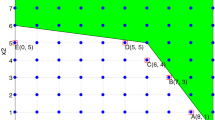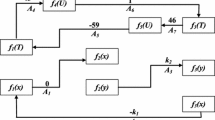Abstract
This paper presents a systems life cycle and a structured design method which are tailored towards the construction of real-time systems in general, and hard real-time systems in particular. The standard systems life cycle is modified to take into account the expression and satisfaction of non-functional requirements. The HOOD design method is extended to support abstractions which explicitly cater for the characteristics and properties of hard real-time systems. The new method is called HRT-HOOD (Hard Real-time HOOD).
Preview
Unable to display preview. Download preview PDF.
Similar content being viewed by others
References
European Space Agency, “HOOD Reference Manual Issue 3.0”, WME/89-173/JB (September 1989).
N.C. Audsley, A. Burns, M.F. Richardson and A.J. Wellings, “Hard Real-Time Scheduling: The Deadline Monotonic Approach”, Proceedings 8th IEEE Workshop on Real-Time Operating Systems and Software, Atlanta, GA, USA (15–17 May 1991).
A. Burns and A. M. Lister, “A Framework for Building Dependable Systems”, Computer Journal 34(2), pp. 173–181 (1991).
A. Burns and A.J. Wellings, Hard Real-time HOOD: A Design Method for Hard Real-time Ada 9X Systems, Towards Ada 9X, Proceedings of 1991 Ada UK International Conference, IOS Press (1992).
Intermetrics, “Draft Ada 9X Mapping Document, Volume II, Mapping Specification”, Ada 9X Project Report (August 1991).
H. Kopetz, “Design Principles for Fault Tolerant Real Time Systems”, MARS Report, Institut für Technische Informatik, 8/85/2 (1985).
J.P. Lehoczky, L. Sha and V. Ding, “The Rate Monotonic Scheduling Algorithm: Exact Characterization and Average Case Behavior”, Tech Report, Department of Statistics, Carnegie-Mellon (1987).
L. Sha, R. Rajkumar and J. P. Lehoczky, “Priority Inheritance Protocols: An Approach to Real-Time Synchronisation”, IEEE Transactions on Computers 39(9), pp. 1175–1185 (September 1990).
Author information
Authors and Affiliations
Editor information
Rights and permissions
Copyright information
© 1992 Springer-Verlag Berlin Heidelberg
About this paper
Cite this paper
Burns, A., Wellings, A.J. (1992). Designing hard real-time systems. In: van Katwijk, J. (eds) Ada: Moving Towards 2000. Ada-Europe 1992. Lecture Notes in Computer Science, vol 603. Springer, Berlin, Heidelberg. https://doi.org/10.1007/3-540-55585-4_11
Download citation
DOI: https://doi.org/10.1007/3-540-55585-4_11
Published:
Publisher Name: Springer, Berlin, Heidelberg
Print ISBN: 978-3-540-55585-8
Online ISBN: 978-3-540-47240-7
eBook Packages: Springer Book Archive




